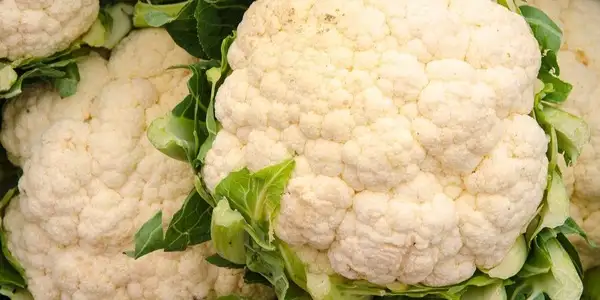
Cauliflower doesn't always get a lot of affection. If you're trying to eat the rainbow, this white cruciferous vegetable - a kindred spirit to broccoli and...
Read more


|
Nutrient |
Per 100 g | Per portion (150 g) |
|---|---|---|
|
Calorific value |
180 kJ | 270 kJ |
|
Energy |
43 kcal | 64.5 kcal |
|
Carbohydrates |
6 g | 9 g |
|
Protein |
1 g | 1.5 g |
|
Fat |
0 g | 0 g |
The food Bell pepper (red, fresh) is composed of the following macronutrients.
Red bell bell pepper is a very healthy food that contains a variety of nutrients that are beneficial for health. Here are some of the most important benefits of bell peppers:
Bell peppers, or Capsicum annuum, are a popular vegetable grown in many parts of the world. They belong to the nightshade family and come in a variety of shapes, sizes and colors, including green, yellow, orange and red. Bell peppers are particularly rich in vitamin C and beta-carotene and are often used in salads, sauces, soups and other dishes.
Red peppers have a sweet flavor and a firm, crunchy texture, making them a popular vegetable for raw or lightly steamed dishes. They can also be roasted, grilled or baked, allowing for a wide variety of dishes.
Bell peppers are a good source of vitamin C, beta-carotene and fiber, and can also contain good amounts of potassium, magnesium and folate. They are often considered a healthy choice for a balanced diet and can be used in many different recipes, from salads and sauces to soups and stuffings.
How are peppers grown and harvested?
Peppers are grown outdoors, but also in greenhouses. They prefer warm temperatures and plenty of sunlight and are grown in tropical and subtropical regions. Peppers are grown from seeds or runners and take about 70 to 80 days to reach maturity. As they grow, they need to be watered and fertilized regularly to thrive optimally.
How do I store peppers and how long do I keep them fresh?
Peppers should be stored at room temperature to keep them fresh. They can also be stored in the refrigerator if you want them to stay fresh longer. Red peppers have a slightly longer shelf life than green peppers and can be stored in the refrigerator for up to a week. Green peppers should be consumed within one to two days. There are also ways to keep peppers fresh longer by freezing or drying them.
Are there differences between red peppers and other types of peppers such as green, yellow or orange peppers?
There are differences between the different types of peppers, especially in terms of flavor, texture and nutritional content. Red peppers tend to taste sweeter than green peppers because they ripen longer on the plant and therefore contain more sugar. Green peppers taste slightly hotter and are often less sweet than red peppers. Yellow and orange peppers fall between red and green in taste. Red peppers tend to be softer than green peppers because they ripen longer on the plant, giving them more time to break down their cell walls. Green peppers are usually firm and crunchy, making them better suited for raw or lightly steamed dishes. Yellow and orange peppers have a texture that lies between red and green.
I love this app! The food is super varied and filling (and soo delicious!). With one purchase I have the ingredients for a whole week together, thanks to the shopping list. The ingredients are also readily available and not really expensive.
Nicole — App User
The first app in the field of nutrition tips that really convinces me. Updates get minor issues out of the way and new features are added all the time. Top!
Unknown user — App User
ave already tried many nutrition apps but here it is really great and you save a lot of time because you do not have to enter all the meals yourself! 👍👏
Mareen — App User
I don't usually rate apps but this one has to be rated.... I have never had such a great app just fits everything.... The nutrition plans are just absolutely awesome just everything is awesome many many thanks
Mareen — App User
This app is an excellent support for healthy eating even with little time and effort! Super recipes are also included. Highly recommended!
Lennert — App User